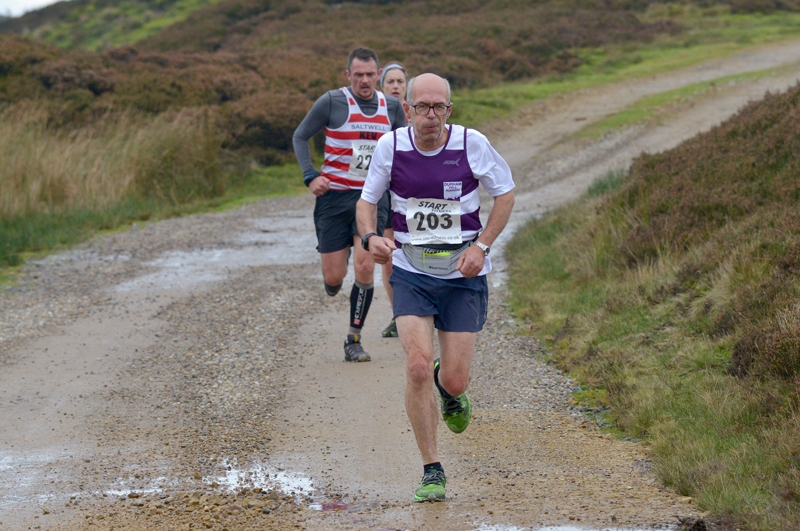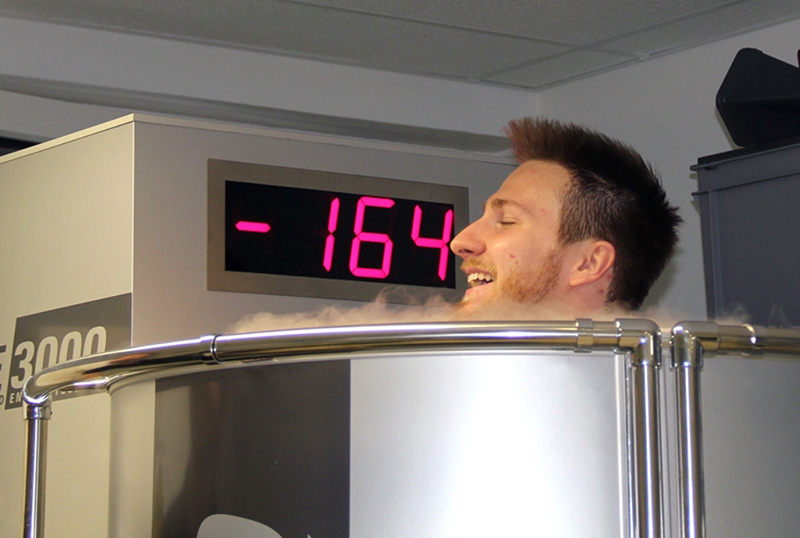You are viewing 1 of your 1 free articles. For unlimited access take a risk-free trial
Recovery: listen to your body - not just technology!
Andrew Hamilton presents some of the latest findings from the world of sport performance science
Andrew Hamilton explains why listening to your body is still a vital part of determining how well recovered you are
In recent years, the explosion of digital technology has made it easier than ever to monitor and analyse your performance. Data collected using techniques such as heart rate variability (HRV) can give runners, cyclists and triathletes a greater insight into levels of fatigue and recovery. But as Joe Beer explained when he discussed this topic in another recent article, HRV data alone may not be sufficient to properly assess your readiness to train or compete. In any case, this assumes you use a heart rate monitor with HRV. But what about athletes who prefer to train with a minimum of technological intrusion? Well, the good news is that research suggests that some simple self-monitoring techniques could tell you quite a lot about your recovery and readiness to train.
What the research says
In one study, researchers wanted to find out if some simple self-monitoring techniques were sufficient to distinguish between acute fatigue and functional overreaching [Int J Sports Physiol Perform. 2017 Apr;12(Suppl 2):S287-S294]. Functional overreaching involves much deeper fatigue, which impacts the ability to train; when you are functionally overreached, you need to rest or risk overtraining, which can lead to illness and injury. Thirty fit (but not elite) cyclists participated in an 8-day cycling event, which covered over 1,300km and involved 18,500 metres of ascent (hard!). The cyclists’ performances were measured before and after the event using a maximal incremental test. Those cyclists who suffered a performance loss in the test after the event were classified as ‘functionally overreached’; cyclists whose test performances were unchanged were classified as ‘fatigued’. Importantly, the researchers took daily measures (using questionnaires) of the cyclists’ mental and physical well being (eg subjective fatigue), resting heart rates, temperatures and mood (eg how enthusiastic they felt about riding that day) during the event to see whether they subsequently predicted which of the cyclists became functionally overreached, and which simply became fatigued.
The findings
The first finding was that out of the thirty cyclists, fifteen subsequently became functionally overreached while fourteen were just fatigued (one subject didn’t complete the event). Secondly, there was no single measurement during the event that was able to predict whether cyclists were likely to become functionally overreached or just fatigued. However, after three days of assessment, a combination of just two questions – asking about the levels of subjective fatigue the cyclists were experiencing and how ready they felt to get on the bike -correctly predicted the likelihood of becoming functionally overreached.
What does this mean and how can you apply it?
What this research suggests is that while technology to monitor performance and fatigue can be very useful, you shouldn’t neglect the basics of self-monitoring – not just how fatigued you feel, but also your enthusiasm for training. If you find that you are both tired and have no enthusiasm for training, there’s every chance that you would do well to rest (or at least back off) regardless of what the data says! Below are some practical suggestions that you should always bear in mind, no matter how sophisticated your digital technology is. There are also some ’essential reading’ articles, which explain how you can successfully train without overtraining - and the role of digital technology in that process!
Practical suggestions
- ALWAYS keep a training diary or log; you need to be able to take a retrospective look at your training (type, volume, intensity) to be able to determine what works and what doesn’t.
- As well as subjective fatigue, be sure to include information on your mood state. Look for instances when your fatigue is high and your mood state is low; you should be able to see what kind of training preceded these instances, which will help you adjust it in the future
- Don’t be afraid to ask the opinion of others. In particular, listen to your friends and family – their opinion on whether you’re overtraining or fatigued may be very valid indeed.
- Look at additional data such as HRV fatigue/recovery in the context of your diary data.
Newsletter Sign Up
Testimonials
Dr. Alexandra Fandetti-Robin, Back & Body Chiropractic
Elspeth Cowell MSCh DpodM SRCh HCPC reg
William Hunter, Nuffield Health
Newsletter Sign Up
Coaches Testimonials
Dr. Alexandra Fandetti-Robin, Back & Body Chiropractic
Elspeth Cowell MSCh DpodM SRCh HCPC reg
William Hunter, Nuffield Health
Keep up with latest sports science research and apply it to maximize performance
Today you have the chance to join a group of athletes, and sports coaches/trainers who all have something special in common...
They use the latest research to improve performance for themselves and their clients - both athletes and sports teams - with help from global specialists in the fields of sports science, sports medicine and sports psychology.
They do this by reading Sports Performance Bulletin, an easy-to-digest but serious-minded journal dedicated to high performance sports. SPB offers a wealth of information and insight into the latest research, in an easily-accessible and understood format, along with a wealth of practical recommendations.
*includes 3 coaching manuals
Get Inspired
All the latest techniques and approaches
Sports Performance Bulletin helps dedicated endurance athletes improve their performance. Sense-checking the latest sports science research, and sourcing evidence and case studies to support findings, Sports Performance Bulletin turns proven insights into easily digestible practical advice. Supporting athletes, coaches and professionals who wish to ensure their guidance and programmes are kept right up to date and based on credible science.













